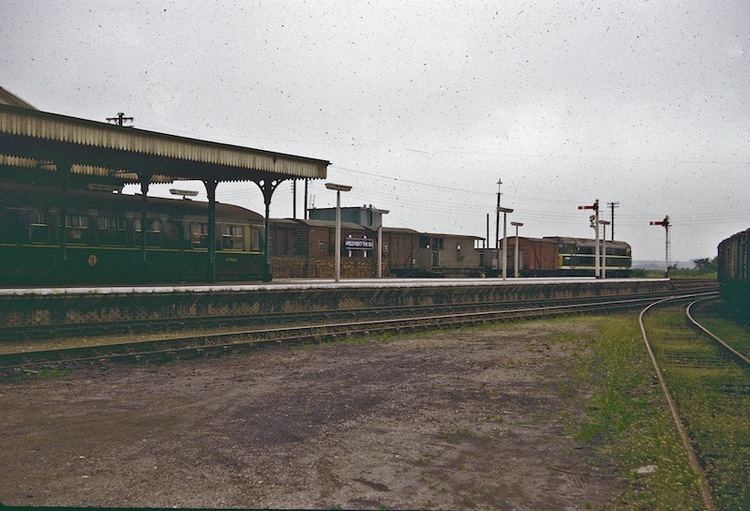Grid reference TF920433 | ||
 | ||
Address Norfolk Coast AONB, Wells-next-the-Sea NR23 1QB, UK | ||
Wells-next-the-Sea railway station served the small seaside port of Wells-next-the-Sea in North Norfolk, England. It was opened in 1857 by the Wells & Fakenham Railway, later part of the Great Eastern Railway's Wymondham to Wells branch, and became a junction in 1866 with the arrival of the West Norfolk Junction Railway. It closed in 1964.
Contents
Opening
Wells was first linked with the railway in 1857 when the Wells & Fakenham Railway opened a line to Fakenham, largely driven by the efforts of Lord Leicester and the directors of the railway company. They hoped that the railway, to be worked by the Eastern Counties Railway, would help reverse the declining fortunes of the town, whose inability to take ships of increasing size saw it overtaken by other ports. The decline continued notwithstanding the construction of a short branch line to Wells Harbour in 1860. In 1862, the Wells & Fakenham Railway became part of the Great Eastern Railway, a move which brought greater importance to the Wells line by providing a north-south connection with London's increasing food markets.
The West Norfolk Junction Railway was the next to come to Wells, in August 1866. The line came from Heacham on an 18½ mile single track aimed at exploiting the great arc of coastline between Hunstanton and Yarmouth. This line entered Wells on a sharp curve, turning through a full 180 degrees before converging with the Wells & Fakenham branch from Dereham for the final approach. West Norfolk services used the outer face of a sheltered wooden island platform to the south of the station, with the inner face for services to Dereham and Wymondham. The Dereham side was unusual in that there was a platform on either side of the train, allowing the passengers the choice of which side to alight from, much the same as Ventnor and Ulverston stations.
Station facilities
The main red brick two-storey 'L' shaped Georgian-style station buildings were constructed at right angles to the platform ends and incorporated a stationmaster's residence.
Wells had a combined engine shed and goods shed, with the locomotives having use of the whole shed when not required for goods. This adjoined the main station building on the Wells & Fakenham platform side. In 1929 the original 42' turntable was replaced by a second-hand 45' version. This lay just to the north of the station, and was capable of accommodating the former Great Eastern's "Claud Hamilton" locomotives and other 4-4-0 classes, but not the B12s or other large engines. Wells was an outstation of Norwich depot, and there were up to five locomotives based there. The shed officially closed in September 1955 and has since been demolished.
Operations
Wells was a busy terminal station for almost 100 years, with a dozen or so passenger trains calling each day and goods trains from the harbour. Messrs Dewing & Kersley opened a corn mill adjacent to the station in 1904, and the smell of animal feedstuffs often wafted into the station to mix with the smoke, steam and hot oil odours given off by the locomotives, and the fishy smells coming from the 'Stiffkey Blues' cockles loaded into the guards' vans of trains.
The post-war boom experienced by the King's Lynn to Hunstanton line was not felt on the West Norfolk Junction Railway, whose inconveniently-sited stations contributed to declining passenger traffic. Passenger services between Wells and Heacham were withdrawn from 2 June 1952, but the line remained open to freight. In the North Sea flood of 1953, the track between Wells and Holkham was so severely damaged that British Railways considered it not worth repairing and the line was closed completely between these two places. The station closed a little over ten years later when the line from Dereham to Wells closed to passenger traffic on 5 October 1964.
Present day
In 2007 the station building was a second-hand bookshop and pottery, with the site of the platforms an industrial estate known as Great Eastern Way. The old corn mill was used as a furniture warehouse, before being converted into flats. Part of the ground floor is occupied by Wells Antiques Centre and Glaven Veterinary Centre.
Wells and Walsingham Light Railway
Since 1982, there has been a second station at Wells, the terminus of the narrow gauge Wells and Walsingham Light Railway. This station is to the south of where the original line crossed the main coast road on the level.
